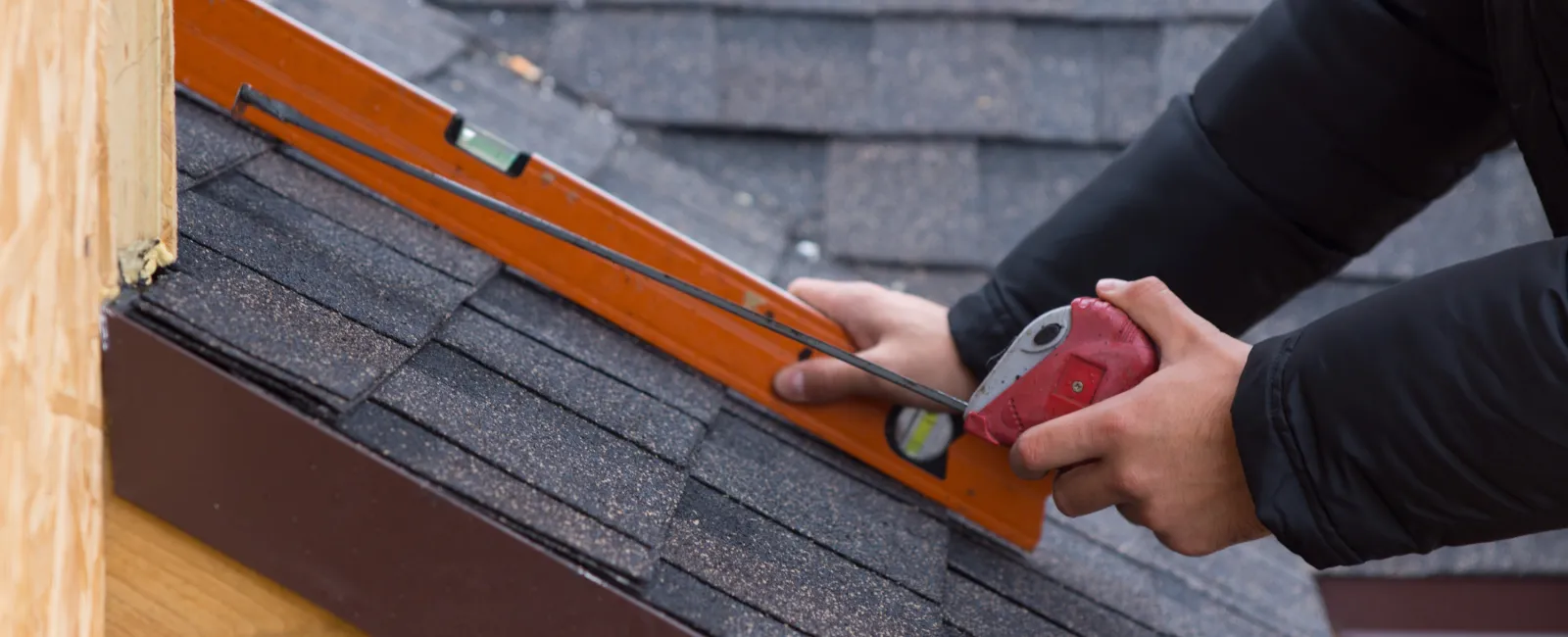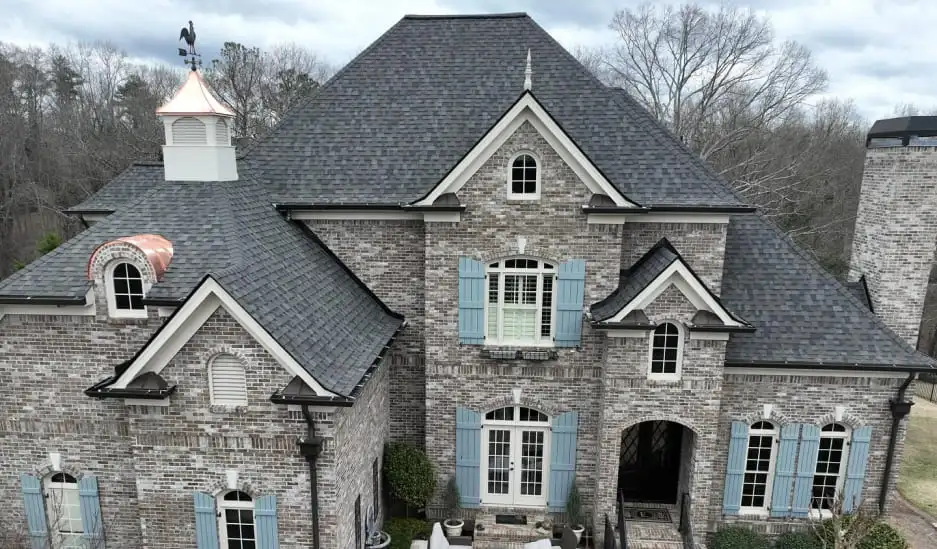Roof pitch refers to the angle of your roof, or how steeply it slopes. Pitch is usually described as a ratio of vertical rise in inches for every 12 inches of horizontal surface. A 2/12 roof – which rises two inches for every 12 inches covered – is considered a very low pitch. A roof at 9/12 is considered a very high pitch. Most home rooftops are somewhere in the middle. When you remodel or build a roof, you have the option to choose a specific pitch, so let’s look at how that affects your roof.
Water Collection and Flow
Rooftops with high pitches are really good at moving water. That high slope means that gravity will help get rid of moisture in hard rainfall and snow in cold winters. However, this also puts more pressure on your gutters, which need to withstand a high rate of water flow. If heavy rain is common in your area, a higher pitch combined with properly sized gutters is a smart choice.
Rooftops with low slopes, meanwhile, don’t do as well in areas that get a lot of rain; low-pitched roofs can develop standing water issues more easily than steeper versions (fully flat roofs are the worst culprits of all), and lingering moisture is one of the worst things for your roof.
Leaf and Debris Collection
Gravity again comes to the rescue when it comes to leaves and other debris, which tend to slide off – or get blown off – high-pitched roofs. Rooftops with low slopes, however, tend to catch debris more easily and keep it longer, which can be a problem if you have plenty of nearby trees. Mats of leaves and needles foster moisture damage and mildew, so you want to avoid long-term roof debris when possible.
Wind Shear
Wind shear refers to wind velocity around sharp edges. If your area experiences a lot of wind (hills and seaside properties are especially vulnerable), consider the effects of shear forces. High roof pitches tend to experience more wind shear, which can put shingles at greater risk of damage during storms. A lower roof pitch can help you protect your roof in these cases.
Renovation and Repair Difficulty
Take a look at a high-pitched roof and it’s easy to see that they must require more materials and more complicated support structures than low-pitch roofs. That means installation and repair costs may be higher than low-sloping roofs, especially when replacing significant sections of the roof. Low-slope rooftops are, in general, less expensive.
The type of materials required may also be a factor. Certain shingles and tiles can’t be used on especially low slopes, at least not without a lot of customization, and heavier panels may not be suitable for a high roof pitch. If you have any questions about the best materials for your roof pitch, ask us at Findlay Roofing and we can find the right solution for your project.



